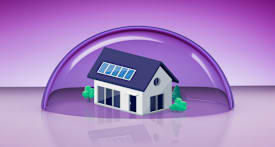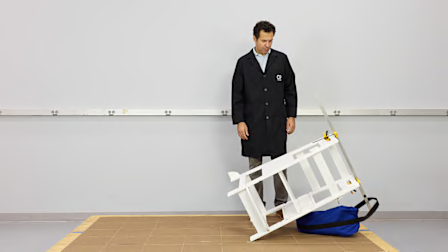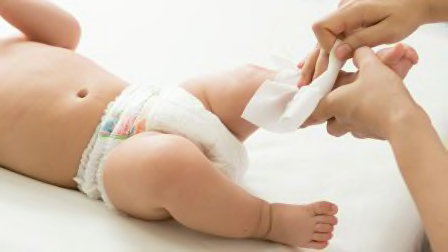How and When to Use Swaddles and Sleep Sacks for Your Baby
And when to stop swaddling, according to infant safety experts

The hospital nurses always made it look so easy.
Each time they came into our hospital room after we had our first child, the nurses adeptly swaddled our daughter in a hospital baby blanket and explained each step while my husband and I hovered over them, watching carefully. But no matter how many times we tried to swaddle her ourselves, we couldn’t do it. Our daughter’s little hands would quickly and easily slip out of the blanket as she yearned to be free.
So what is swaddling, and why were we so desperate to learn how to do it for our new baby?
Swaddling Basics
Swaddling is the practice of gently wrapping a light blanket around a baby to help them feel calm, snug, and secure. According to Whitney Casares, MD, MPH, board-certified pediatrician, author, and CEO and founder of Modern Mommy Doc, “swaddling mimics the womb environment, a snug, secure space new babies are comfortable in.”
Swaddling has potential benefits for newborns (and new parents), such as:
How to Use a Swaddle Safely
The National Institutes of Health supports wearable swaddles and sleep sacks for warmth and comfort. You can start swaddling your baby from day one.
However, safe sleep guidelines for newborns from the American Academy of Pediatrics (AAP) caution that “there is no evidence to recommend swaddling as a strategy to reduce the risk of SIDS.” While swaddling may help keep your baby feeling warm and comforted, there’s a higher risk of danger if a swaddled baby rolls onto their belly. When swaddling, make sure to always “place your baby on their back to sleep on a firm, flat surface and monitor them to be sure they don’t roll over while swaddled,” according to the AAP.
Infant safety experts also warn against using any weighted swaddles or blankets, which can place too much pressure on a baby’s chest and lungs. These products are not recommended by the AAP. Lattuca also does not recommend weighted swaddles or the Magic Merlin sleep suit. “When it comes to the Magic Merlin, you have a lot of hefty weight and [babies] are stuck in one position, which we don’t want,” she says.
When to Stop Swaddling
Swaddling isn’t forever. So how do you safely transition your baby out of their snug swaddle blanket into the next step?
The AAP says you should stop swaddling your baby as soon as they show any signs of trying to roll over. “Every baby is different, but typically you’re going to see signs of rolling between 8 weeks and 12 weeks,” Lattuca says. “That really is the ideal time to start making a transition.”
Casares says that “when a baby rolls over when swaddled, they can have an increased risk of suffocation since they can get stuck on their stomachs if their arms are not free.” A baby’s arms and hands should be free so that they can push themselves up and roll themselves back onto their backs. Some swaddling products allow for babies’ arms to be free, while still allowing for the snug feeling around the baby’s torso that they find comforting.
When to Use a Sleep Sack
Once your baby is rolling over and can no longer be swaddled, you may wonder, what’s next?
The AAP advises against loose bedding and blankets for babies in their sleep area, which “can increase your baby’s risk of entrapment, suffocation, or strangulation.” This includes pillows, blankets, non-fitted sheets, toys, and any products that attach to the crib.
Instead, try a wearable blanket, also called a sleep sack or sleep bag. The AAP says that “infant sleep clothing, such as layers of clothing or a wearable blanket or sleep sack, is preferred over blankets and other coverings to keep a baby warm.”
“Wearable blankets are sleeveless garments babies wear over their pajamas to sleep and are used as transitional products when babies are ready to stop using a swaddle,” Casares says. They are a way to add that one extra layer of warmth or comfort for babies, while also being a safer option than traditional blankets, because “they aren’t loose in the crib . . . they’re specifically designed to stay on babies without covering their faces,” Casares says.
A sleep sack allows a baby to move around more freely—if they roll over, they can also roll back onto their back. The AAP says that sleep sacks that do not swaddle and that allow the baby to move freely "can be used as long as you want.” That’s excellent news—my 2-year-old son still prefers a sleep sack to any blanket, even asking for it when it’s bedtime.
“We want babies to move, especially when they hit that 12- or 14-week mark and they’re officially out of that fourth trimester, we want their bodies to move,” Lattuca says. “We want their gross motor development to start moving and even their fine motor development. We want their hips to be mobile. So actually having space to move around is good."
Safe Sleep Basics
Whether swaddling, using a sleep sack, or wearing pajamas, the same overall guidelines apply for reducing the risk of SIDS as well as suffocation or strangulation, and keeping babies safe while they’re sleeping:
- Put your baby on their back for naps and at night.
- Put your baby on a firm, flat, noninclined sleep surface.
- Never sleep with your baby, but instead, room share.
- Keep soft objects and any sort of loose bedding out of their sleep space.
- Avoid letting your baby get overheated.
While my husband and I never mastered the swaddle blanket technique, we still loved being able to swaddle our babies when they were infants. Swaddling comforted our newborns, and maybe even helped us all get a little bit more sleep in those early days.




















